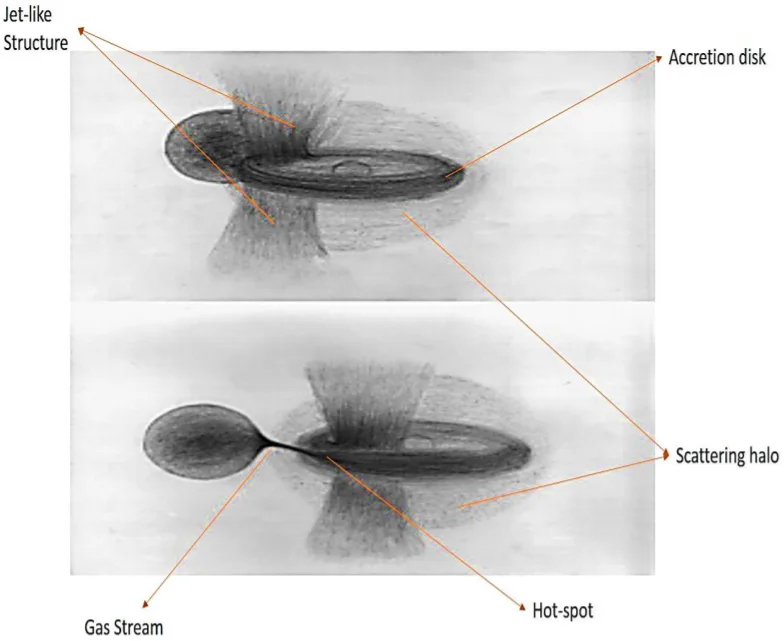S.P. Putra
,
I. Imaduddin
,
Aprilia
,
Dhimaz G. Ramadhan
,
H.L. Malasan
,
M.I. Arifyanto
September 2019

We present the spectroscopic observation of $\beta$ Lyrae, an interacting eclipsing binary, with orbital rotation period of 12.9 days, with one component known as the B-emission (Be) star. The primary star is a B6-B8II of 3 M$\odot$ and the secondary is a 13 M$\odot$ B0.5V star. The secondary star is embedded in the accretion disk produced by the infalling matter from the primary star, and this disk is estimated as the source of the emission lines. The observations were conducted at Bosscha Observatory, Lembang, Indonesia from May to August 2018, using 10-inch Meade LX-200R Telescope (D = 254 f/D = 9.84), equipped with a Littrow High Resolution Spectrograph (LHIRES) III, grating of 1200 grooves/mm yielding in the resolution of R$\sim$5900, and CCD SBIG ST-402 XME camera with backfocus at 17.5 mm. Seeing during observation was estimated to be 2 arc seconds. During this period, we have obtained 15 spectra in various wavelength coverage, 4 spectra covering around $\lambda\lambda$ = 5779 – 6046 AA (typical S/N = 0.02), 1 spectrum covering around $\lambda\lambda$ = 6430.257 – 6694.434 AA (typical S/N = 0.06), and 10 spectra covering around $\lambda\lambda$ = 6487 – 6752 AA (typical S/N = 0.06). The observed spectra show Halpha-emission profiles with V/R variation, He I 6678 AA with P-Cygni profiles, and He I 5876 AA with P-Cygni profiles. These variations are due to the fact that $\beta$ Lyrae is a binary star system, and also it is suspected that another possible mechanism might be involved.
| Jenis |
Karya Tulis Konfrensi |
| Publikasi |
Journal of Physics: Conference Series, Volume 1231, Issue 1, article id. 012011 (2019). |

